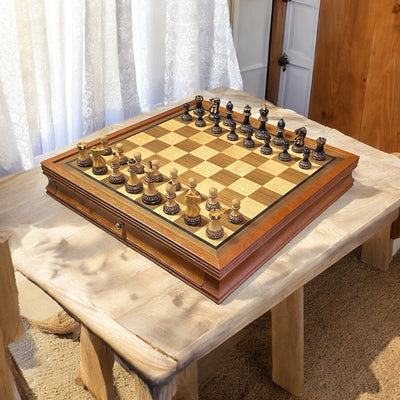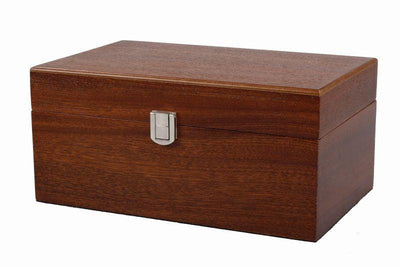Creating a Balanced Chess Aesthetic: Matching Pieces and Boards
Selecting the right chess pieces and board size is a crucial aspect of your chess set. Achieving the perfect fit not only ensures functionality but also enhances the overall visual appeal of your setup. It's essential to consider three main dimensions when making your choice:
King's Base Diameter: The base diameter of the king piece.
Square Size: The dimensions of the squares on the chess board.
Overall Board Size: The total dimensions of the chess board.
To strike the right balance, there's an official guideline used in tournaments that outlines the relationship between chess pieces and the board. According to this guideline, the king's base diameter should not exceed 75% of the square's diameter on the chess board. For instance, if a king has a base diameter of 1.5 inches, the square diameter should be at least 2 inches.
However, personal preference plays a role as well. Not everyone requires adherence to tournament standards, so individual preference matters. In a chess set, the king piece typically has the widest base diameter. As a minimum requirement, the squares on the board should comfortably accommodate the king piece. The space remaining on the edges of the square when the king is centered becomes a critical factor.
Selecting the Right Size:
If the board's squares match the king's base diameter, it's often perceived as too small. While playable, this setup might appear cluttered and messy.
Opting for a larger chess board might cause the pieces to seem diminished within the vast squares. While the king could look appropriate, the pawns may appear small and insignificant in the center of the squares.
The Ideal Balance:
The best combination involves providing the king with some space around its base within the square, and ensuring that pawns feel at home on the same board.
In our chess piece sets, you'll find board size recommendations provided with each listing. We never suggest a board that's too small for the pieces, though we might recommend one slightly smaller than the 75% rule suggests, to maintain a visually pleasing and balanced appearance.









